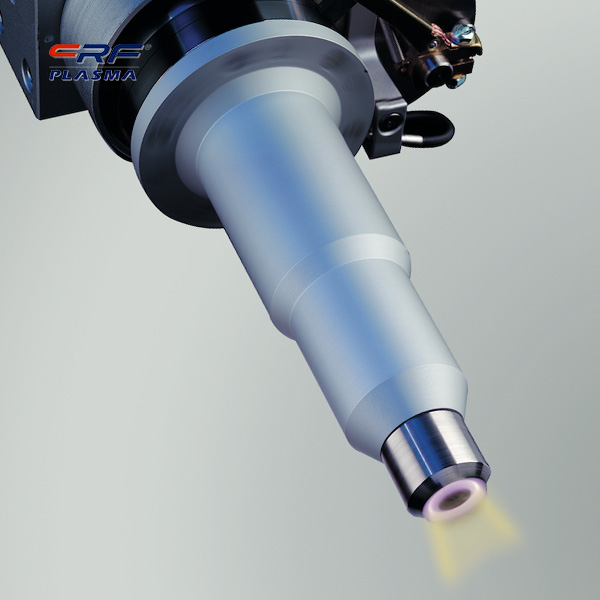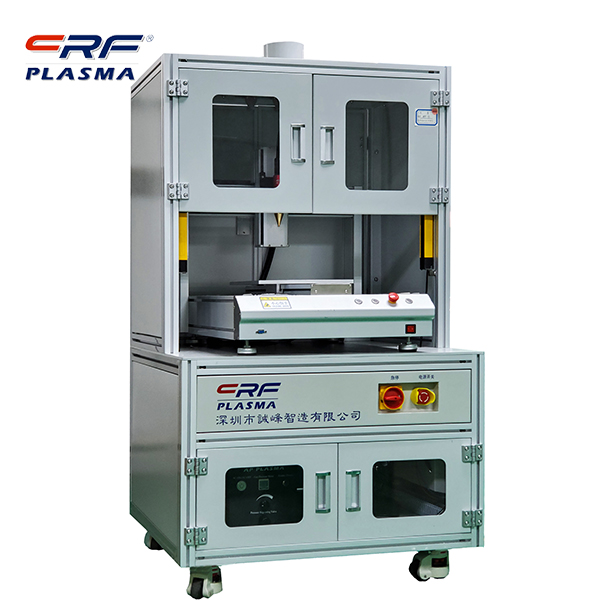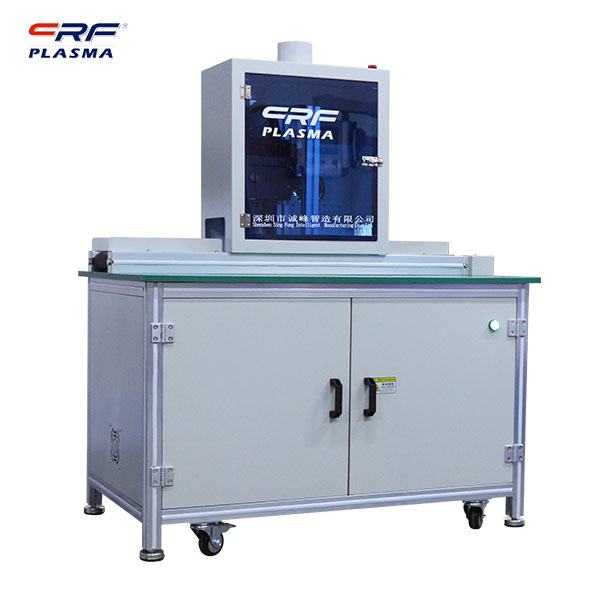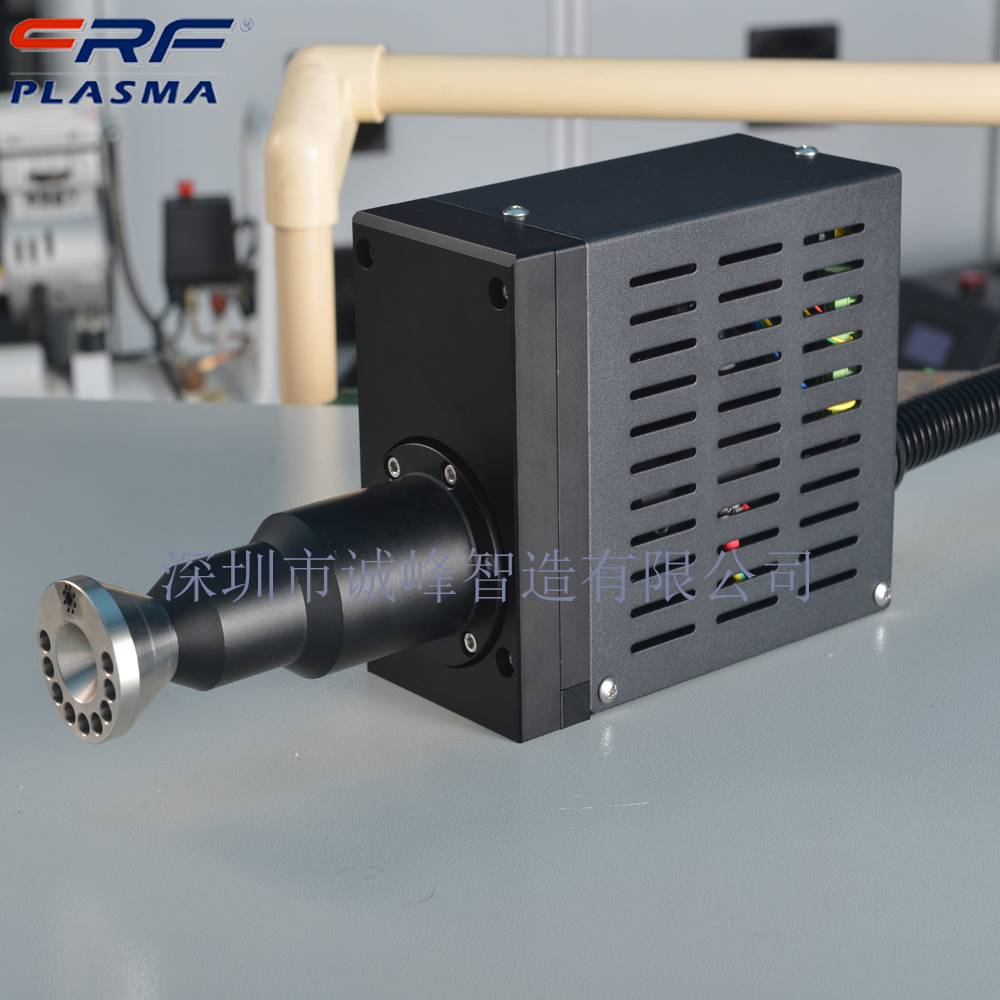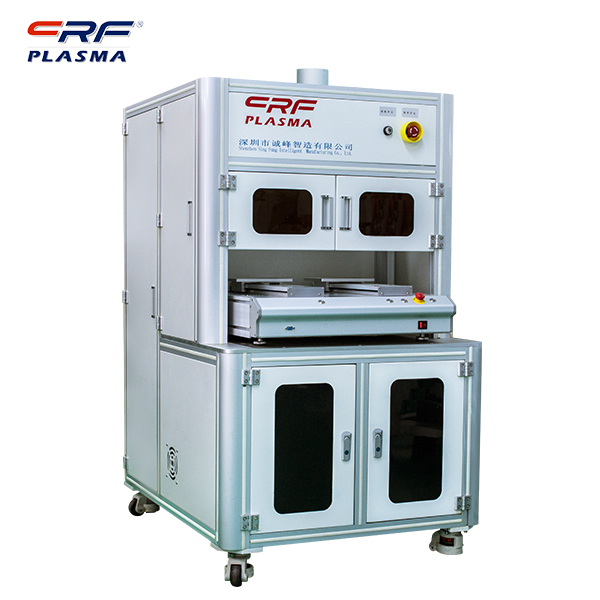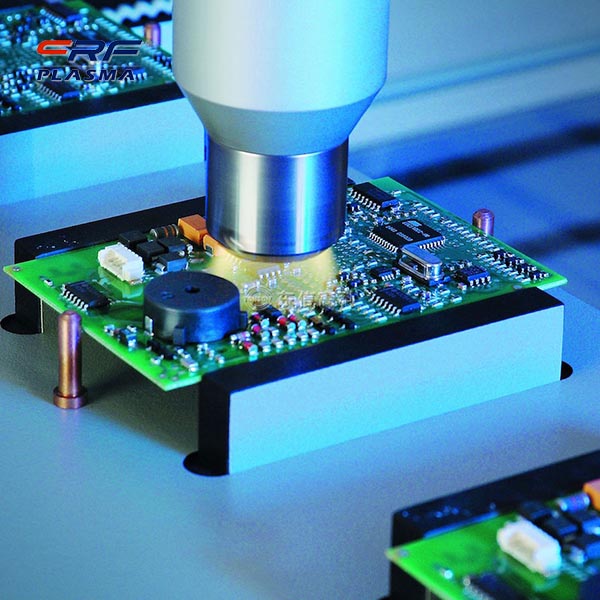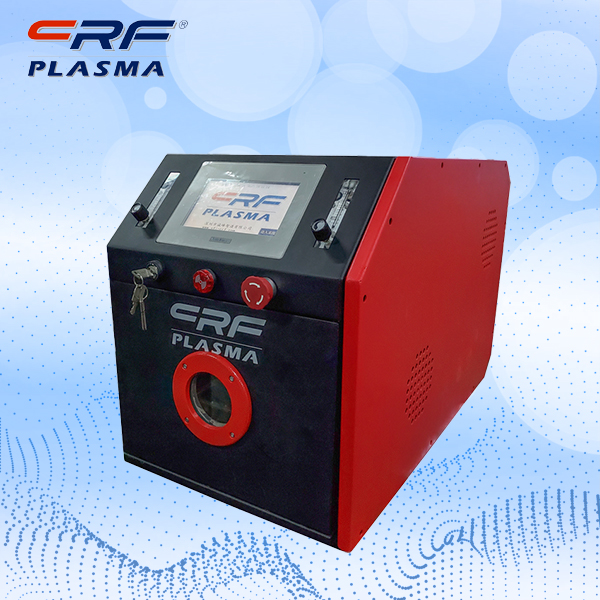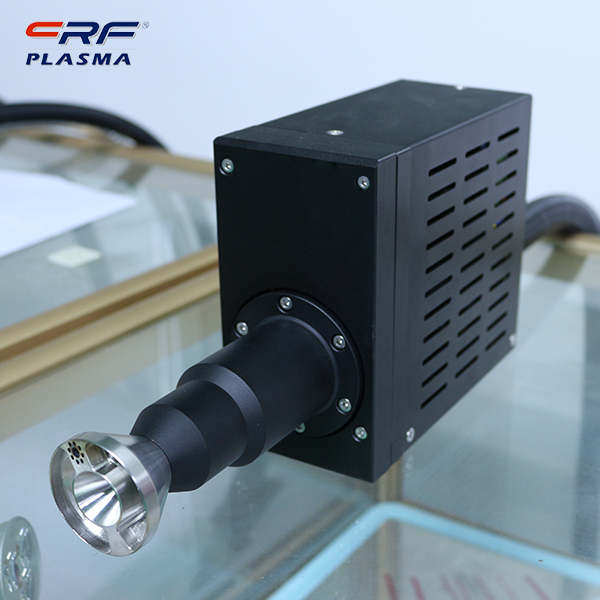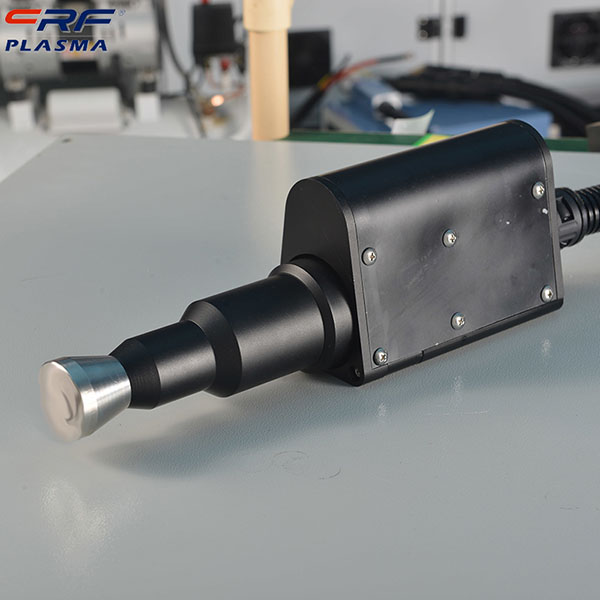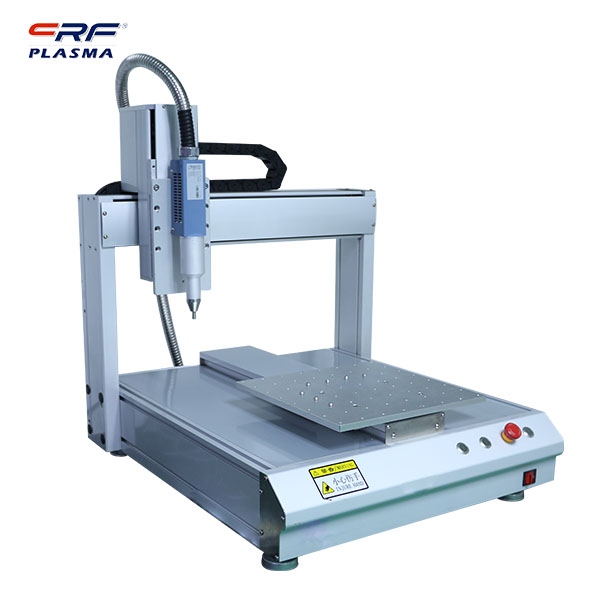
Welcome to Shenzhen Sing Fung Intelligent Manufacturing Co., Ltd.
E-mail:shaobo@sfi-crf.com
Catalytic activity of supported transition metal oxide catalysts under plasma plasma
- Categories:Technical Support
- Author:Plasma cleaning machine-CRF plasma plasma equipment-plasma surface treatment machine manufacturer-chengfeng intelligent manufacturing
- Origin:
- Time of issue:2022-03-02
- Views:
(Summary description)Catalytic activity of supported transition metal oxide catalysts under plasma plasma: According to the analysis results of the conversion reaction of CO2 oxidation of CH4 under the action of pure plasma plasma, refer to the relevant literature on the reaction of CO2 oxidation of CH4 to C2 hydrocarbons under the action of catalysis. It can be considered that in the plasma-catalyzed co-activated CO2 oxidation of CH4 to C2 hydrocarbons, the methane CH bond is broken mainly through the following pathways: 1. The inelastic collision of CH4 and high-energy electrons; 2. The activation of CH4 by reactive oxygen species; 3. The adsorption of CH4 by the catalyst Molecules, activate the C-H bond, causing the C-H bond to break. The conversion pathway of carbon dioxide is as follows: 1. The inelastic collision between CO2 molecules and high-energy electrons; 2. The active species such as CHx and H in the system activate CO2; 3. The catalyst adsorbs CO2 molecules, activates the C-0 bond, and promotes the cleavage of the CO bond to generate CO. and active O atoms. Obviously, pathway 3 is undoubtedly important for the conversion of CH4 and CO2 under the combined action of plasma catalysis. The activation of catalysts in plasma plasma mainly depends on collision with high-energy electrons. Due to the differences in the properties of catalysts, the catalysts have different activities, and have different adsorption and activation capabilities for methane and carbon dioxide. It can be seen from the above test results that NiO/Y-Al2O3 has strong adsorption, activation methane and carbon dioxide ability under the same plasma, so the conversion rate of CH and CO2 is high. On the contrary, Co2O3/Y-Al2O3 has weak ability to adsorb and activate methane, and the conversion rate of CH4 is low; Zn0/Y-Al2O has weak ability to adsorb and activate carbon dioxide, resulting in low CO2 conversion rate. Under the action of plasma, according to the yield of C2 hydrocarbons, the catalytic activity sequence of supported transition metal oxides is: Na2WO4/Y-Al2O3>Cr2O3/Y-Al2O3≈Fe2O3/Y-Al2O3>TiO2/Y-Al2O3≈NiO/ Y-Al2O3≈Mn2O3/Y-Al2O3>Co2O3/Y-Al2O3>ZnO/Y-Al2O3≈MoO3/Y-Al2O3≈Re2O7/Y-Al2O3 According to the level of CO yield, the order of catalytic activity of supported transition metal oxides for: NiO/Y-Al2O3> TiO2/Y-Al2O3>Re2O3/Y-Al2O3≈Fe2O3/Y-Al2O3≈Co2O3/Y-Al2O3>MoO33/Y-Al2O3≈ZnO/Y-Al2O3≈Mn2O3/Y-Al2O3>Na2WO4/ Y-Al2O3≈Cr2O3/Y-A12O3. The experimental results show that the co-action of plasma plasma and supported transition metal oxide catalysts has different effects on the formation of C2 and CO. Na2WO4/Y-Al2O3 has higher C2 hydrocarbon yield (17.8%); NiO/Y-Al2O3 has higher CO yield (53.4%). Re2O7/Y-Al2O3 has a lower yield of C2 hydrocarbons (8.8%), and Cr2O3/Y-Al2O3 has a lower yield of CO (34.5%). Under the action of plasma catalysis, the reaction product is mainly formed by the recombination of active species on the surface of the third body, that is, C2 hydrocarbons are formed by the recombination of CHx on the surface of the third body, and CO is directly formed by the decomposition of carbon dioxide or C and O ( Oxygen-containing) actives are formed by recombining two pathways on the surface of the third body. Obviously, the adsorption capacity of the catalyst to various free radicals in the reaction system and whether the adsorption site is suitable will affect the yield of the reaction products C2 hydrocarbons and CO. For the Na2WO4/Y-Al2O3 catalyst, the yield of C2 hydrocarbons is much higher than other catalysts. The possible reason is that the surface of the catalyst is easy to attach CHx radicals, and the adsorption site is appropriate, which leads to the increased probability of CHx radicals coupling to generate C2 hydrocarbons. For NiO/Y-Al2O3, in addition to the higher CO2 conversion rate and the combination of C and O in the system, the CO2 yield is higher, and the active O2 adsorbed on the catalyst when the CHx radical is adsorbed on its surface. Atomic oxidation to generate CO is also a more important reason. The effect of NiO loading on the yields of 2 hydrocarbons and CO was investigated under the same experimental conditions. With the increase of NiO loading, the C2 hydrocarbon yield decreased and the CO yield increased. When the NiO loading was 40%, the reaction system had No C2 hydrocarbons can be detected, which confirms from the side that there is a CHx radical oxidation process on the surface of the catalyst in the reaction of CO2 oxidation of CH4 to C2 hydrocarbons when plasma plasma and NiO/Y-Al2O3 catalyst work together. Therefore, for the target product of the study, Na2WO4/Y-Al2O3 should be selected to generate C2 hydrocarbons, while NiO/Y-Al2O3 is more favorable for the formation of CO. The purpose of adding a catalyst for CO2 oxidation and CH4 conversion under the action of plasma is to improve the yield of C2 hydrocarbons with higher economic value. Therefore, improving the C2 hydrocarbon selectivity and C2 hydrocarbo
Catalytic activity of supported transition metal oxide catalysts under plasma plasma
(Summary description)Catalytic activity of supported transition metal oxide catalysts under plasma plasma:
According to the analysis results of the conversion reaction of CO2 oxidation of CH4 under the action of pure plasma plasma, refer to the relevant literature on the reaction of CO2 oxidation of CH4 to C2 hydrocarbons under the action of catalysis. It can be considered that in the plasma-catalyzed co-activated CO2 oxidation of CH4 to C2 hydrocarbons, the methane CH bond is broken mainly through the following pathways: 1. The inelastic collision of CH4 and high-energy electrons; 2. The activation of CH4 by reactive oxygen species; 3. The adsorption of CH4 by the catalyst Molecules, activate the C-H bond, causing the C-H bond to break. The conversion pathway of carbon dioxide is as follows: 1. The inelastic collision between CO2 molecules and high-energy electrons; 2. The active species such as CHx and H in the system activate CO2; 3. The catalyst adsorbs CO2 molecules, activates the C-0 bond, and promotes the cleavage of the CO bond to generate CO. and active O atoms.
Obviously, pathway 3 is undoubtedly important for the conversion of CH4 and CO2 under the combined action of plasma catalysis. The activation of catalysts in plasma plasma mainly depends on collision with high-energy electrons. Due to the differences in the properties of catalysts, the catalysts have different activities, and have different adsorption and activation capabilities for methane and carbon dioxide. It can be seen from the above test results that NiO/Y-Al2O3 has strong adsorption, activation methane and carbon dioxide ability under the same plasma, so the conversion rate of CH and CO2 is high. On the contrary, Co2O3/Y-Al2O3 has weak ability to adsorb and activate methane, and the conversion rate of CH4 is low; Zn0/Y-Al2O has weak ability to adsorb and activate carbon dioxide, resulting in low CO2 conversion rate.
Under the action of plasma, according to the yield of C2 hydrocarbons, the catalytic activity sequence of supported transition metal oxides is: Na2WO4/Y-Al2O3>Cr2O3/Y-Al2O3≈Fe2O3/Y-Al2O3>TiO2/Y-Al2O3≈NiO/ Y-Al2O3≈Mn2O3/Y-Al2O3>Co2O3/Y-Al2O3>ZnO/Y-Al2O3≈MoO3/Y-Al2O3≈Re2O7/Y-Al2O3 According to the level of CO yield, the order of catalytic activity of supported transition metal oxides for:
NiO/Y-Al2O3> TiO2/Y-Al2O3>Re2O3/Y-Al2O3≈Fe2O3/Y-Al2O3≈Co2O3/Y-Al2O3>MoO33/Y-Al2O3≈ZnO/Y-Al2O3≈Mn2O3/Y-Al2O3>Na2WO4/ Y-Al2O3≈Cr2O3/Y-A12O3.
The experimental results show that the co-action of plasma plasma and supported transition metal oxide catalysts has different effects on the formation of C2 and CO. Na2WO4/Y-Al2O3 has higher C2 hydrocarbon yield (17.8%); NiO/Y-Al2O3 has higher CO yield (53.4%). Re2O7/Y-Al2O3 has a lower yield of C2 hydrocarbons (8.8%), and Cr2O3/Y-Al2O3 has a lower yield of CO (34.5%). Under the action of plasma catalysis, the reaction product is mainly formed by the recombination of active species on the surface of the third body, that is, C2 hydrocarbons are formed by the recombination of CHx on the surface of the third body, and CO is directly formed by the decomposition of carbon dioxide or C and O ( Oxygen-containing) actives are formed by recombining two pathways on the surface of the third body. Obviously, the adsorption capacity of the catalyst to various free radicals in the reaction system and whether the adsorption site is suitable will affect the yield of the reaction products C2 hydrocarbons and CO. For the Na2WO4/Y-Al2O3 catalyst, the yield of C2 hydrocarbons is much higher than other catalysts. The possible reason is that the surface of the catalyst is easy to attach CHx radicals, and the adsorption site is appropriate, which leads to the increased probability of CHx radicals coupling to generate C2 hydrocarbons.
For NiO/Y-Al2O3, in addition to the higher CO2 conversion rate and the combination of C and O in the system, the CO2 yield is higher, and the active O2 adsorbed on the catalyst when the CHx radical is adsorbed on its surface. Atomic oxidation to generate CO is also a more important reason. The effect of NiO loading on the yields of 2 hydrocarbons and CO was investigated under the same experimental conditions. With the increase of NiO loading, the C2 hydrocarbon yield decreased and the CO yield increased. When the NiO loading was 40%, the reaction system had No C2 hydrocarbons can be detected, which confirms from the side that there is a CHx radical oxidation process on the surface of the catalyst in the reaction of CO2 oxidation of CH4 to C2 hydrocarbons when plasma plasma and NiO/Y-Al2O3 catalyst work together. Therefore, for the target product of the study, Na2WO4/Y-Al2O3 should be selected to generate C2 hydrocarbons, while NiO/Y-Al2O3 is more favorable for the formation of CO.
The purpose of adding a catalyst for CO2 oxidation and CH4 conversion under the action of plasma is to improve the yield of C2 hydrocarbons with higher economic value. Therefore, improving the C2 hydrocarbon selectivity and C2 hydrocarbo
- Categories:Technical Support
- Author:Plasma cleaning machine-CRF plasma plasma equipment-plasma surface treatment machine manufacturer-chengfeng intelligent manufacturing
- Origin:
- Time of issue:2022-03-02 16:42
- Views:
Catalytic activity of supported transition metal oxide catalysts under plasma plasma:
According to the analysis results of the conversion reaction of CO2 oxidation of CH4 under the action of pure plasma plasma, refer to the relevant literature on the reaction of CO2 oxidation of CH4 to C2 hydrocarbons under the action of catalysis. It can be considered that in the plasma-catalyzed co-activated CO2 oxidation of CH4 to C2 hydrocarbons, the methane CH bond is broken mainly through the following pathways: 1. The inelastic collision of CH4 and high-energy electrons; 2. The activation of CH4 by reactive oxygen species; 3. The adsorption of CH4 by the catalyst Molecules, activate the C-H bond, causing the C-H bond to break. The conversion pathway of carbon dioxide is as follows: 1. The inelastic collision between CO2 molecules and high-energy electrons; 2. The active species such as CHx and H in the system activate CO2; 3. The catalyst adsorbs CO2 molecules, activates the C-0 bond, and promotes the cleavage of the CO bond to generate CO. and active O atoms.
Obviously, pathway 3 is undoubtedly important for the conversion of CH4 and CO2 under the combined action of plasma catalysis. The activation of catalysts in plasma plasma mainly depends on collision with high-energy electrons. Due to the differences in the properties of catalysts, the catalysts have different activities, and have different adsorption and activation capabilities for methane and carbon dioxide. It can be seen from the above test results that NiO/Y-Al2O3 has strong adsorption, activation methane and carbon dioxide ability under the same plasma, so the conversion rate of CH and CO2 is high. On the contrary, Co2O3/Y-Al2O3 has weak ability to adsorb and activate methane, and the conversion rate of CH4 is low; Zn0/Y-Al2O has weak ability to adsorb and activate carbon dioxide, resulting in low CO2 conversion rate.
Under the action of plasma, according to the yield of C2 hydrocarbons, the catalytic activity sequence of supported transition metal oxides is: Na2WO4/Y-Al2O3>Cr2O3/Y-Al2O3≈Fe2O3/Y-Al2O3>TiO2/Y-Al2O3≈NiO/ Y-Al2O3≈Mn2O3/Y-Al2O3>Co2O3/Y-Al2O3>ZnO/Y-Al2O3≈MoO3/Y-Al2O3≈Re2O7/Y-Al2O3 According to the level of CO yield, the order of catalytic activity of supported transition metal oxides for:
NiO/Y-Al2O3> TiO2/Y-Al2O3>Re2O3/Y-Al2O3≈Fe2O3/Y-Al2O3≈Co2O3/Y-Al2O3>MoO33/Y-Al2O3≈ZnO/Y-Al2O3≈Mn2O3/Y-Al2O3>Na2WO4/ Y-Al2O3≈Cr2O3/Y-A12O3.
The experimental results show that the co-action of plasma plasma and supported transition metal oxide catalysts has different effects on the formation of C2 and CO. Na2WO4/Y-Al2O3 has higher C2 hydrocarbon yield (17.8%); NiO/Y-Al2O3 has higher CO yield (53.4%). Re2O7/Y-Al2O3 has a lower yield of C2 hydrocarbons (8.8%), and Cr2O3/Y-Al2O3 has a lower yield of CO (34.5%). Under the action of plasma catalysis, the reaction product is mainly formed by the recombination of active species on the surface of the third body, that is, C2 hydrocarbons are formed by the recombination of CHx on the surface of the third body, and CO is directly formed by the decomposition of carbon dioxide or C and O ( Oxygen-containing) actives are formed by recombining two pathways on the surface of the third body. Obviously, the adsorption capacity of the catalyst to various free radicals in the reaction system and whether the adsorption site is suitable will affect the yield of the reaction products C2 hydrocarbons and CO. For the Na2WO4/Y-Al2O3 catalyst, the yield of C2 hydrocarbons is much higher than other catalysts. The possible reason is that the surface of the catalyst is easy to attach CHx radicals, and the adsorption site is appropriate, which leads to the increased probability of CHx radicals coupling to generate C2 hydrocarbons.
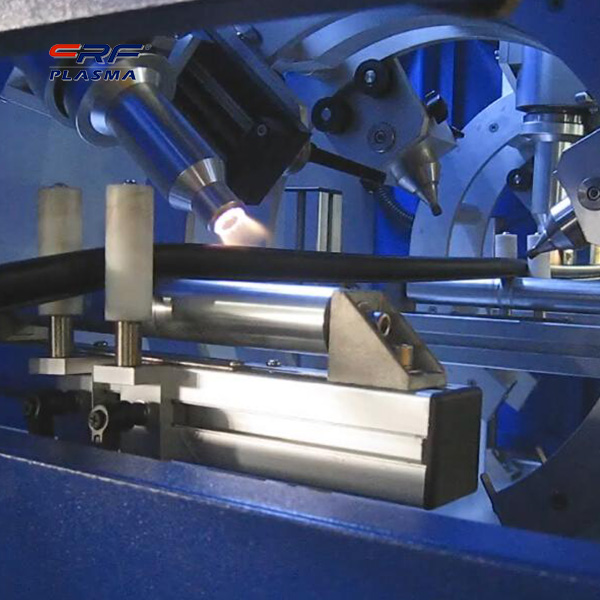 For NiO/Y-Al2O3, in addition to the higher CO2 conversion rate and the combination of C and O in the system, the CO2 yield is higher, and the active O2 adsorbed on the catalyst when the CHx radical is adsorbed on its surface. Atomic oxidation to generate CO is also a more important reason. The effect of NiO loading on the yields of 2 hydrocarbons and CO was investigated under the same experimental conditions. With the increase of NiO loading, the C2 hydrocarbon yield decreased and the CO yield increased. When the NiO loading was 40%, the reaction system had No C2 hydrocarbons can be detected, which confirms from the side that there is a CHx radical oxidation process on the surface of the catalyst in the reaction of CO2 oxidation of CH4 to C2 hydrocarbons when plasma plasma and NiO/Y-Al2O3 catalyst work together. Therefore, for the target product of the study, Na2WO4/Y-Al2O3 should be selected to generate C2 hydrocarbons, while NiO/Y-Al2O3 is more favorable for the formation of CO.
For NiO/Y-Al2O3, in addition to the higher CO2 conversion rate and the combination of C and O in the system, the CO2 yield is higher, and the active O2 adsorbed on the catalyst when the CHx radical is adsorbed on its surface. Atomic oxidation to generate CO is also a more important reason. The effect of NiO loading on the yields of 2 hydrocarbons and CO was investigated under the same experimental conditions. With the increase of NiO loading, the C2 hydrocarbon yield decreased and the CO yield increased. When the NiO loading was 40%, the reaction system had No C2 hydrocarbons can be detected, which confirms from the side that there is a CHx radical oxidation process on the surface of the catalyst in the reaction of CO2 oxidation of CH4 to C2 hydrocarbons when plasma plasma and NiO/Y-Al2O3 catalyst work together. Therefore, for the target product of the study, Na2WO4/Y-Al2O3 should be selected to generate C2 hydrocarbons, while NiO/Y-Al2O3 is more favorable for the formation of CO.
The purpose of adding a catalyst for CO2 oxidation and CH4 conversion under the action of plasma is to improve the yield of C2 hydrocarbons with higher economic value. Therefore, improving the C2 hydrocarbon selectivity and C2 hydrocarbon yield is the foundation of the research. The oxidative coupling reaction of CH4 with CO2 as oxidant under the action of the above ten supported transition metal oxide catalysts is in descending order of C2 hydrocarbon selectivity:
Na2WO4/Y-Al2O3>Cr203/Y-Al203 ≈Fe203/Y-Al203>TiO2/Y-Al203>Mn203/Y-Al203≈Co203/Y-Al203>NiO/Y-Al203>ZnO/Y-A12O3≈Re207/ Y-A12O3>MoO3/Y-Al2O3.
Compared with the effect of catalyst on the yield of C2 hydrocarbons, the order of the two is basically the same. Although the conversion rate of methane under the combined action of plasma and Na2WO4/Y-Al203 catalyst is not high, the selectivity of C2 hydrocarbons is higher than that of the catalyst. NiO/Y-Al203 is nearly 35 percentage points, so the yield of C2 hydrocarbons is 5 percentage points higher than that of NiO/Y-Al203. Apparently Na2WO4/Y-Al2O3 contributes to the formation of C2 hydrocarbons under the action of plasma. In the reaction of CO2 oxidation of CH4 to C2 hydrocarbons under ordinary catalytic conditions, when the reaction temperature was 820 °C, the C2 hydrocarbon selectivity given by the supported Na2WO4 catalyst was as high as 94.5%, although the methane conversion rate was low (4.73%).
The conclusion is that Na2WO4/Y-Al203 still has high C2 hydrocarbon selectivity under plasma plasma conditions, and the C2 hydrocarbon selectivity is 72% when the plasma injection power is 30W. Therefore, under the action of atmospheric pressure and low temperature plasma, for the ten transition metal oxide catalysts involved in the experiment, NiO/Y-Al2O3 promoted the oxidation of CO2 to CH4 conversion, which was conducive to the generation of CO and H2, Na2WO4/Y-Al2O3, It is an excellent catalyst for the oxidative coupling reaction of methane.
Scan the QR code to read on your phone

TEL:0755-3367 3020 / 0755-3367 3019

E-mail:sales-sfi@sfi-crf.com

ADD:Mabao Industrial Zone, Huangpu, Baoan District, Shenzhen




